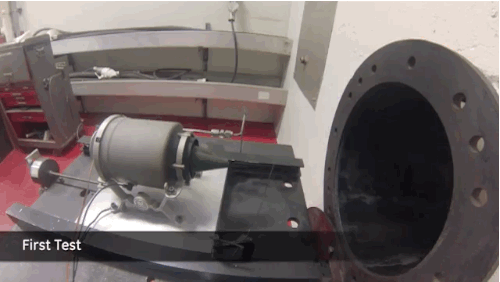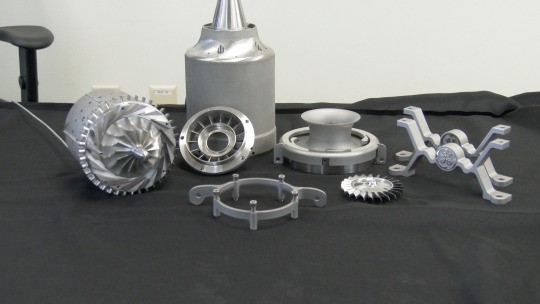 Testing the boundaries of high-grade additive manufacturing, engineers from GE Aviation’s Additive Development center in Cincinnati have 3D printed a mini-jet engine capable of revving up to 33,000 rotations per minute. Built over the course of a couple years, the jet engine is a down-scaled version of an actual jet engine similar to the kind used to propel remote-control airplanes.
Testing the boundaries of high-grade additive manufacturing, engineers from GE Aviation’s Additive Development center in Cincinnati have 3D printed a mini-jet engine capable of revving up to 33,000 rotations per minute. Built over the course of a couple years, the jet engine is a down-scaled version of an actual jet engine similar to the kind used to propel remote-control airplanes.
“We wanted to see if we could build a little engine that runs almost entirely out of additive manufacturing parts,” explains one of the engineers. “This was a fun side project.” Although obviously lacking the intricacy of an actual jet engine, the 8 by 12 device produces enough power to warrant a go inside a test cell used for actual jet engines.
Is such a device practical? No, not really. But its conception signifies how advanced additive manufacturing has come along.

Unlike the traditional manufacturing techniques reliant on milling components from a larger hunk of material, the project’s components were constructed solely through the additive manufacturing technique used in 3D printers capable of working with metals, meaning that GE’s in-house printer used lasers to fused thin layers of metal upon other thin layers of metal from the ground up, drastically reducing the amount of material waste while simultaneously allowing the creation of more advanced parts.

“There are really a lot of benefits to building things through additive,” says Matt Benvie, spokesman for GE Aviation. “You get speed because there’s less need for tooling and you go right from a model or idea to making a part. You can also get geometries that just can’t be made any other way.”
The same engineering responsible for the mini-engine has also created metal parts using this same technique that have been tested and approved for a version of the GE90.
Source: GEreports
Advertisement
Learn more about Electronic Products Magazine





